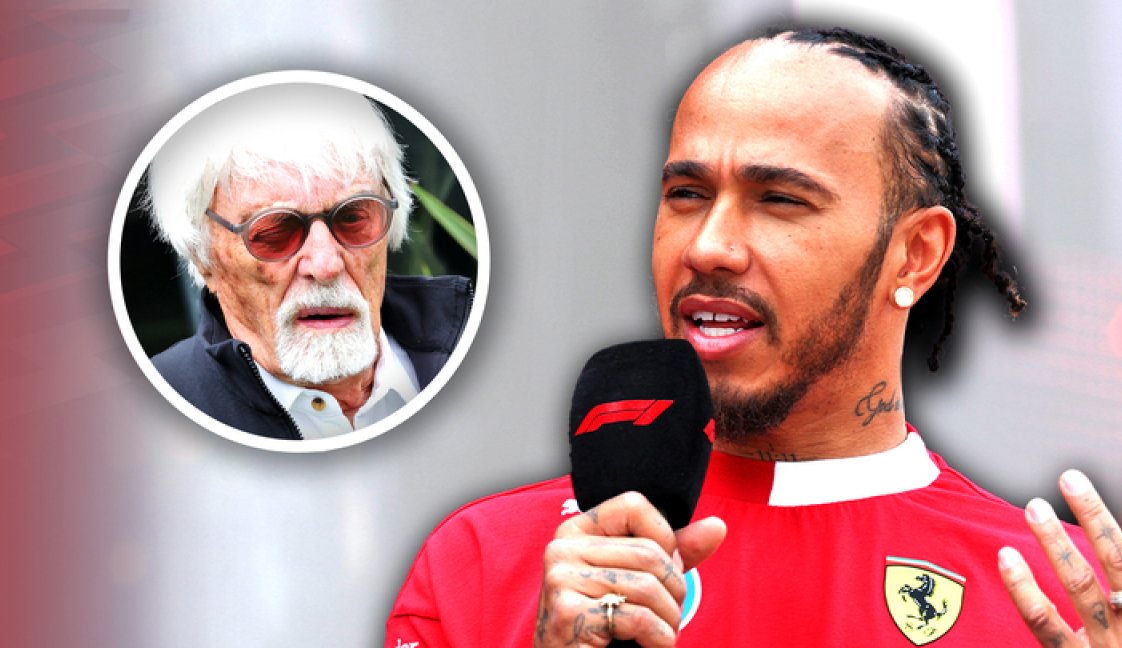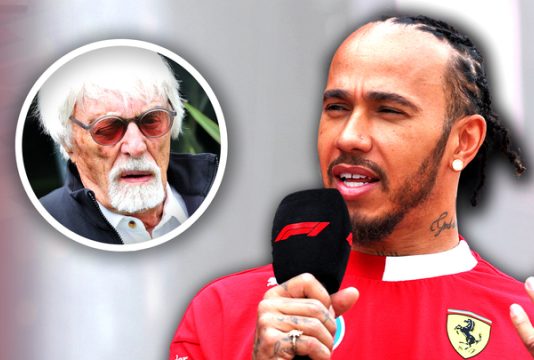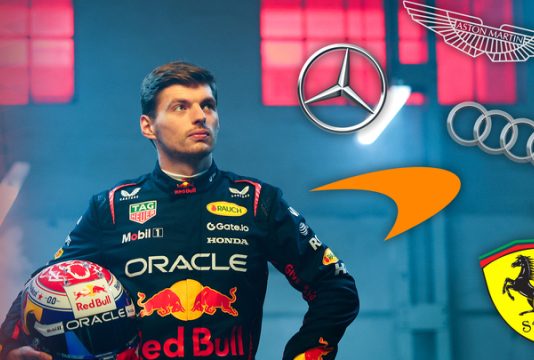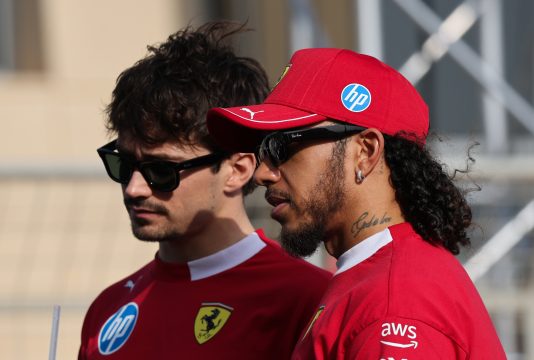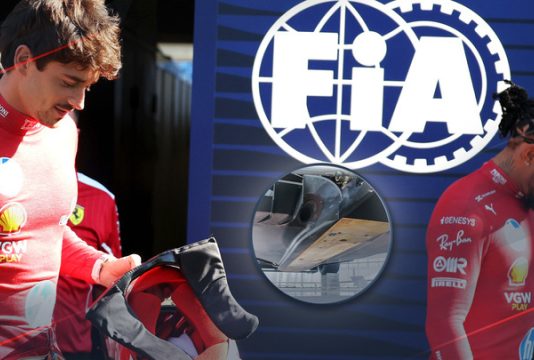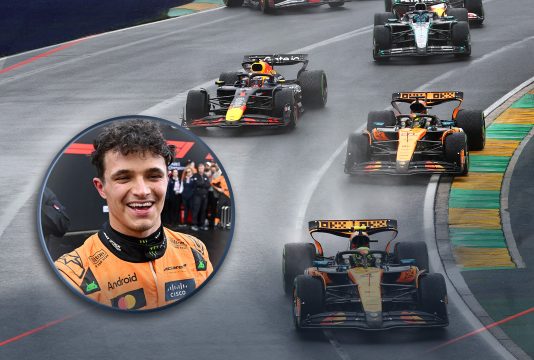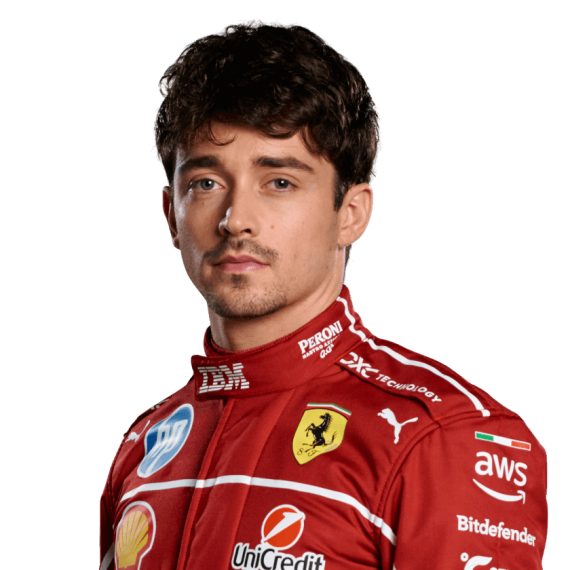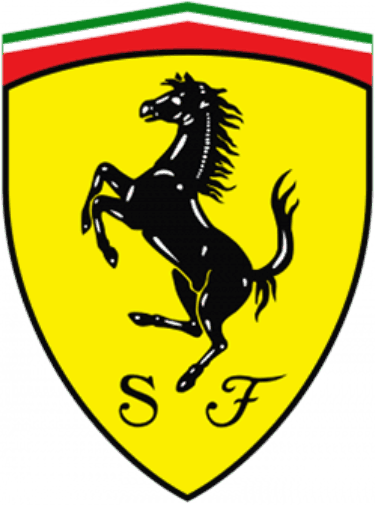
Scuderia Ferrari
Leclerc & HamiltonIn 2024, Ferrari performed strongly and was able to compete for the world title. Unfortunately, rival McLaren achieved the best result, but the team enters 2025 with high confidence. With the arrival of Lewis Hamilton, the Italian team has an incredibly strong driver pairing alongside Charles Leclerc.
F1 season 2026
| WC Position | 4 |
| WC points | 0.0 |
| Podiums | 0 |
| Pole positions | 0 |
F1 history
| World titles | 16 |
| WC Points | 10722 |
| Podiums | 836 |
| Pole positions | 782 |
Ferrari foundations and early history
Ferrari have a long and storied history in F1, being the sport's oldest and most successful team.
Founded in 1929 by Enzo Ferrari, the team was initially created with the intention of entering amateur drivers in various races. The idea came to life on 16 November 1929, when Ferrari asked for financial help from textile heirs Augusto and Alfredo Caniato, along with wealthy amateur racer Mario Tadini, during a dinner in Bologna.
He then gathered a group that included over 40 drivers, most of whom competed in various Alfa Romeo 8C cars, while Ferrari himself continued racing until the the birth of his son, Dino, in 1932. The prancing horse blazon made its first appearance at the 1932 Spa 24 Hours on a two-car team of Alfa Romeo 8C 2300 Spiders, which finished first and second.
With Alfa Romeo experiencing economic hardships, the outfit withdrew from in-house racing, making Scuderia Ferrari the acting team when the factory released the Monoposto Tipo B racers to the Scuderia. The first car to wear the Ferrari badge came in 1925, when Enzo and Luigi Bazzi built the Alfa Romeo Bimotore. After managing numerous drivers, Alfa Romeo made Enzo the manager of the factory racing division, Alfa Corse, in 1938.
However, after a disagreement, Enzo left, founding the Auto Avio Costruizioni Ferrari, which also manufactured machine tools. He was allowed to exit Alfa on the condition that the Ferrari name would not appear on cars for four years.
Ferrari started working on his own race car, the Tipo 815, in 1939/40, making it the first true Ferrari car. However, World War II put a temporary hold on all racing. While Ferrari continued to manufacture machine tools, the headquarters were moved to Maranello in 1943, only to be bombed the following year.
After rebuilding the venue, the 12-cylinder, 1.5 L Tipo 125 was created, and it went on to compete at several non-championship Grands Prix. Making its debut at the 1948 Italian Grand Prix with Raymond Sommer, the team's first win came at the Circuit di Garda with Giuseppe Farina.
Once the four-year restriction expired, the road car company Ferrari S.p.A was born, while the name SEFAC (Società Per Azioni Escercizio Fabbriche Automobili e Corse) was used for the racing division.
F1 World Championship begins with Ferrari
The first F1 World Championship was established in 1950, with Scuderia Ferrari taking part from the beginning. To this day, the Italian outfit are the only team to have competed in every season since its inception.
Ferrari didn't take part in the first race of the championship, the British Grand Prix, due to a dispute over money paid to entrants. As a result, the squad debuted at the Monaco Grand Prix with the 125 F1, which featured a supercharged version of the 125 F12.
The trio of Alberto Ascari, Raymond Sommer and Gigi Villoresi were unable to stop Alfa Romeo's dominance, as they won all 11 events (six World Championship races and five non-championship). However, Ferrari ended that run in 1951 when Jose Friolan Gonzalez took the British Grand Prix, ahead of Juan Manuel Fangio in the Alfa Romeo.
With Alfa Romeo withdrawing from the sport after the 1951 season, Ferrari went on to win almost every race in 1952 with the 2.0 L 4-cyl Ferrari Tipo 500, with Ascari clinching the championship after winning six consecutive races. Ascari took the title again the following year.
The final Grand Prix of the season saw Fangio win in a Maserati, and it was a sign of things to come as the Argentine claimed the title in the subsequent season, too. Ferrari were unable to keep up with their Italian competitors and Mercedes, resulting in just two victories in 1954.
Ferrari continued to win races in the years that followed, though it wasn't until 1958 that they took another Drivers' Championship. Mike Hawthorn won in the Ferrari 246 F1 with a V6 engine named after Enzo Ferrari's recently deceased son. Hawthorn announced his retirement after the triumph, but tragically he passed away just three months later following a road accident.
1960s success with Hill and Surtees
After Phil Hill gave Ferrari their only win in 1960, the American battled it out with teammate Wolfgang von Trips for the title during the following year in the Ferrari 156, which was based on the Formula 2 car that had dominated the series the year before.
Giancarlo Baghetti joined the team mid-season and became the first driver to win his debut race at the French Grand Prix. However, the season ended on a tragic note. as Von Trips crashed at the Italian Grand Prix and was killed, along with over a dozen spectators. As a result, Hill won his only title, with Ferrari opting not to compete at the season finale at Watkins Glen in New York.
John Surtees and Lorenzo Bandini were joined by Pedro Rodriguez in 1964 and, while the Ferrari was slower than Jim Clark's Lotus, its superior reliability made the difference. Surtees took the title after claiming two victories, while Bandini added a third victory and finished fourth in the standings.
From there, Ferrari entered into a decline as the likes of Lotus, Brabham and Matra claimed titles to close out the decade.
1970s and return to glory with Lauda
The 1970s started with Jacky Ickx - who rejoined the team for a second stint - battling it out with Lotus' Jochen Rindt for the title. Ickx won three races, while Clay Regazzoni added a fourth in Italy.
In the end, Ickx had to settle for second in the championship as he was unable to overtake Rindt, who passed away with four races remaining during practice for the Italian Grand Prix. He became the only driver to be posthumously awarded the Drivers' Championship. Ferrari driver Pedro Rodriguez was also killed at an Interserie sports car race in Nuremberg.
The following three years saw Ferrari struggle, with the team failing to attend two races - the Dutch and German Grands Prix - in 1973, the first time the team had done so since starting in Formula 1.
Niki Lauda was signed in 1974, while Luca di Montezemolo was appointed Team Principal the same year, with the Scuderia's fortunes turning around. Ferrari won races in Spain, the Netherlands and Germany, but ultimately Regazzoni lost the World Championship to Emerson Fittipaldi at the final race of the season in the USA.
Mauro Forghieri designed the Ferrari 312T used in 1975, and it proved to be a success. The team returned to its winning ways, with Lauda calling it "the unbelievable year". No other car in the field could match the 312T, with Lauda winning five races and Regazzoni adding a sixth victory. However, it was Lauda who took the Drivers' Championship with ease over Fittipaldi in the McLaren.
Lauda was comfortably leading the championship in 1976 when disaster struck at the German Grand Prix at the Nurburgring. The Austrian crashed his Ferrari and was enveloped in flames before being hit by two further cars. Lauda suffered serious burns and was rushed to hospital, where he fought for his life over the next few days.
While Ferrari hired Carlos Reutemann as a replacement, the team fielded three cars at the Italian Grand Prix as Lauda returned just six weeks after his accident. While the Austrian scored points at two races following his return, he voluntarily withdrew from the season-ending Japenese Grand Prix at Fuji due to heavy rain, opening the door for James Hunt to win the title by one point, though Ferrari won the Constructors' Championship for a second year running.
There was no stopping Lauda in 1977, as he won three races to take his second title ahead of Jody Scheckter and Mario Andretti. However, his relationship with Ferrari deteriorated from there, and Lauda left for Brabham at the end of the season.
Scheckter replaced Reutemann in 1979 and partnered Gilles Villeneuve. The two drivers scored a total of six victories from 15 events, including a 1-2 finish at the Italian Grand Prix, but Scheckter ultimately came out on top by four points. It was Ferrari's last Drivers' Championship for 21 years.
Early 1980s success followed by decline
Scheckter's title defence in 1980 was one to forget as Ferrari fell behind their rivals, with the squad scoring just eight points all season. This prompted the South African to retire at the end of the campaign.
The team bounced back in 1982 with the pairing of Villeneuve and Didier Pieroni, with Ferrari proving to be the best package in terms of speed and reliability for much of the year. However, tragedy struck not once but twice, as Villeneuve was killed during qualifying for the Belgian Grand Prix, while Pieroni suffered career-ending injuries prior to the German Grand Prix. Ferrari still managed to win the Constructors' Championship.
Another Constructors' title followed in 1983, but from there the team failed to mount a serious challenge for the Drivers' crown following Michele Alboreto's efforts in 1985.
Enzo Ferrari passed away in August 1988 at the age of 90, increasing Fiat's shares in the company to 90 percent. Gerhard Berger and Alboreto completed a famous 1-2 at the Italian Grand Prix less than a month after Enzo's passing, with the Austrian dedicating the win - the only one by a team other than McLaren in 1988 - to the late founder.
Ferrari brought reigning World Champion Alain Prost in to partner Nigel Mansell for the 1990 season, and the Frenchman entered the penultimate round of the season in Japan nine points behind rival and former McLaren teammate Ayrton Senna. A controversial collision on the first lap ended Ferrari's hopes for a world title, with Prost forced to settle for second.
Jean Alesi replaced Mansell in 1991, and Prost failed to see out the season after he was fired prior to the Australian Grand Prix due to a falling out with the team. Ferrari failed to win a race in 1991, a trend that continued in 1992 and 1993.
Berger became Alesi's teammate in 1993, while Jean Todt was hired as Team Principal, the first of several moves that would lead to the team's renaissance. Berger won the 1994 German Grand Prix, while Alesi took victory at the 1995 Canadian Grand Prix, though the squad were never in championship contention in either season.
Schumacher joins and writes Ferrari history
The 1996 season saw Ferrari overhaul their driver line-up, with two-time defending World Champion Michael Schumacher joining alongside Eddie Irvine. The German, who won both titles while with Benetton, brought with him several of the team's technical staff, including Technical Director Ross Brawn and Chief Designer Rory Byrne.
While the Ferrari F310 wasn't great in terms of reliability, Schumacher managed to claim three victories in Spain, Belgium and Italy, marking the Scuderia's first win at Monza since 1988.
The increased reliability of the F310B in 1997 year helped Ferrari to push for their first Drivers' Championship since Scheckter in 1979. Schumacher tallied five wins and eight podium finishes, and went into the final race with a one point lead on Jacques Villeneuve.
However, a collision between the two as the Canadian tried to take the lead of the race saw Schumacher forced to retire. Villeneuve carried on and claimed the title with a third-place finish.
Initially deemed a racing incident, Schumacher was disqualified from the 1997 Drivers' Championship for unsportsmanlike behaviour, though Ferrari's points remained intact, and Irvine's five podiums helped the Scuderia to keep second in the Constructors' Championship.
Schumacher battled it out with Mika Hakkinen for the 1998 title, winning six races including three in a row at Canada, France and Great Britain. A standout moment came at the Hungarian Grand Prix, when Brawn switched the German to a three-stop strategy to beat Hakkinen.
However, the fairytale ending wasn't to be. At the season finale in Japan, Schumacher started on the front row but suffered a puncture mid-race, ending his bid for the championship.
In the 1999 season, Ferrari took victory at three of the opening four races, with Eddie Irvine claiming his first career win in Australia. However, things started to go wrong in Canada when Schumacher crashed into the Wall of Champions while leading the race.
The German's bid for the championship ended on Lap 1 of the British Grand Prix, when a rear brake failure sent him crashing heavily at Stowe. Schumacher broke his lower right leg as a result, missing the next six races, while Mika Salo stepped in to replace him.
As a result, Irvine took on Ferrari's push for the title, and won the next two races in Austria and Germany. Schumacher returned for the final two Grands Prix of the season, helping Irvine to win the inaugural Malaysian Grand Prix. Irvine led Hakkinen by four points in the championship heading into the final round, but his bid for the title fell short as Hakkinen won the race and the title by two points. Ferrari did win the Constructors' Championship, though, for the first time since 1983.
End of title drought kicks off historic Ferrari run
Rubens Barrichello replaced Irvine for the 2000 F1 season. The campaign started well, with Schumacher winning the opening three races to lead the championship by 21 points.
That lead shrunk after a string of poor results, though Barrichello took his maiden win at the German Grand Prix after starting 18th on the grid. Ultimately, though, Schumacher ended Ferrari's drought, becoming the Scuderia's first Drivers' Champion since Scheckter in 1979. Barrichello finished fourth in the standings, helping Ferrari to claim their second consecutive Constructors' Championship.
The triumph kickstarted a historic run for the Scuderia, with Schumacher taking the 2001 title after a dominant season in which he earned nine victories and clinched the championship with four races remaining.
Other highlights included the German's win in Belgium; this, being Schumacher's 52nd victory, put him ahead of Alain Prost's all-time career wins record. Although Barrichello didn't win a race, his third place finished helped the team to take another Constructors' crown.
Nobody could stop Ferrari in 2002, as the team won 15 out of the 17 races, matching McLarens record number of wins set in 1988. Schumacher clinched 11 victories, though his win in Austria was controversial, with Barrichello being asked to let him through on the final lap.
This incident resulted in team orders being banned ahead of the 2003 season. Meanwhile, Schumacher matched Fangio's record of achieving five world titles when he won the French Grand Prix.
Ferrari failed to finish on the podium at the season-opening Australian Grand Prix that kicked off the 2003 season, the first time that this had happened to the team since the 1999 European Grand Prix. While McLaren took a lead in the standings, Schumacher eventually fought back to claim a record sixth World Championship, despite starting the season-ending Japanese Grand Prix in 14th and finishing eighth. Barrichello won the event from pole position, securing Ferrari's 13th Constructors' Championship.
The historic run continued in 2004, with Schumacher winning 13 of the 18 races, including 12 of the first 13 of the season. The German clinched his seventh and final championship in Belgium, with the Scuderia adding another Constructors' title. Barrichello, who won two races in Italy and China, finished second.
Ferrari began the 2005 season with a modified version of the previous year's car, but the Scuderia struggled and brought forward the introduction of the F2005 at the Bahrain Grand Prix. Schumacher retired from the race with a hydraulics issue, the team's first mechanical failure since 2001.
Coupled with the poor performance of the Bridgestone tyres, Ferrari's lone win came at the notorious 2005 United States Grand Prix, where only six cars competed. Barrichello departed at the end of the season, with Felipe Massa coming in as his replacement.
The following season saw Ferrari challenge Renault's Fernando Alonso, who had taken his debut World Championship in 2005. Massa claimed his first career win in Turkey, and Schumacher took the chequered flag for the final time in China.
Although the German entered the last race of the campaign with a chance at the title, his bid came up just short, despite working his way up to fourth from the back of the grid. Massa won the race, though Ferrari ended the season five points back of Renault at the top.
Schumacher, who announced his retirement at the Italian Grand Prix, was replaced by Kimi Raikkonen for the 2007 season.
Raikkonen adds to Ferrari's success
Raikkonen won his first race for the team in Australia, becoming the first Ferrari driver to win on his debut since Mansell in 1989. Despite entering the final race of the season trailing McLaren duo Alonso and Lewis Hamilton in the championship standings, the Finn defied the odds to take victory, handing him the world title by just one point.
Raikkonen ended the campaign with nine victories, while Massa's efforts helped the team win the Constructors' Championship as well.
Whilst Raikkonen led the 2008 championship early on, it was ultimately Massa who battled it out with Hamilton for the crown. The Brazilian entered the season finale in his home country with a chance to clinch the title and, although he won, it was Hamilton who became the World Champion after passing Timo Glock on the final corner of the last lap. Despite the disappointment, the Scuderia added another Constructors' title to their tally.
The 2009 campaign started out poorly, with Ferrari having their worst start since 1981. Massa missed the second half of the year after being hit by a detached spring from the rear suspension of Barrichello's Brawn car during qualifying for the Hungarian Grand Prix. He was replaced by Luca Badoer and then Giancarclo Fisichella, with the Scuderia registering their only win of the season in Belgium thanks to Raikkonen.
Close calls with Alonso and Vettel
Raikkonen was replaced by Alonso for 2010, despite the Finn having a year remaining on his contract. The Spaniard started the season strongly, leading a Ferrari 1-2 at the Bahrain Grand Prix and then winning in Germany, Italy, Singapore and Korea.
Alonso entered the final race of the year only needing to finish in the top two to win the title. However, a strategy error resulted in him finishing seventh, handing the championship to Sebastian Vettel.
Ferrari weren't competitive in 2011 and won just one race, but the team returned to form in 2012. Victories in Malaysia, Valencia and Germany helped Alonso to build a 40-point lead in the standings, yet several DNFs helped Vettel to retake the lead.
The Spaniard entered the final race 13 points back of the German, and the gap proved too much to close, despite Alonso finishing the season-ending Brazilian Grand Prix in second.
Vettel dominated the 2013 season in the Red Bull, with Alonso once again settling for second in the standings. While the Ferrari driver registered two wins, his relationship with the team began to sour. That feeling carried over to 2014, as Mercedes burst onto the scene and Ferrari went without a win.
Massive changes followed in 2015, with Vettel replacing Alonso, while Sergio Marchionne and Maurizio Arrivabene took over as Ferrari President and Team Principal respectively. The team ended a run of 34 races without a win by taking the chequered flag in Malaysia thanks to Vettel, who also claimed victory in Hungary and Singapore.
The Scuderia took a step back the following year and failed to win a race, but bounced back in 2017, with Vettel winning the season opener in Australia. As a result, the German became the first Ferrari driver to lead the championship since the 2012 Japanese Grand Prix, along with being the first non-Mercedes driver to do so since he had previously led at the end of the 2013 season.
A 1-2 result came in Monaco, Ferrari's first since 2010. A second one followed in Hungary, but a slump in the latter half the year saw reliability issues dent Vettel's championship hopes. Hamilton clinched the Drivers' Championship, whilst Mercedes took the Constructors' title.
Ferrari and Vettel mounted another push for the title in 2018. However, a mistake at the German Grand Prix at Turn 13 caused the four-time World Champion to crash into the wall. From there, Hamilton didn't look back, taking his fifth title by 88 points.
While Ferrari replaced Raikkonen with young upstart Charles Leclerc prior to the 2019 season, the team were never in the running for the championship. Leclerc finished the campaign with two wins compared to Vettel's one, as Hamilton and Mercedes once again dominated proceedings.
Vettel and Leclerc returned for 2020. Prior to the start of the season, though, it was announced that the German would be replaced by Carlos Sainz at the end of the campaign.
It was a year to forget for the Scuderia as they finished sixth in the Constructors' Championship, their worst result since 1980. A lone bright spot came at the Tuscan Grand Prix, which marked Ferrari's 1,000th Grand Prix start as a constructor.
Signs of progress in 2021
2021 marked a new start for Ferrari, with Leclerc and Sainz forming their youngest driver pairing in over 50 years. Team Principal Mattia Binotto was often full of praise for the line-up, which he felt was the strongest on the grid.
It was a positive start to the campaign, with both drivers scoring points at the season-opening Bahrain Grand Prix, before doing the same at the next event in Imola.
The team looked strong during the Monaco Grand Prix weekend and Leclerc secured pole position, despite crashing in the final stages of qualifying. Heartbreak followed, though, as he was unable to start the race due to an issue with the left driveshaft on his car which was unrepairable.
Sainz, meanwhile, scored the Scuderia's debut podium of the year, and his first with the team. Leclerc went on to claim his only podium finish of the season at the British Grand Prix, where he had led for much of the race but was unable to keep Lewis Hamilton behind at the end.
Other than a challenging weekend at the French Grand Prix - where the team struggled with tyre degradation - Ferrari came away with points from every race.
The second half of the year proved to be especially successful for the Italian outfit as they closed the gap to McLaren in the battle for P3 in the Constructors' Championship.
Sainz claimed three more podiums in Hungary, Russia and Abu Dhabi, and this helped Ferrari to secure third place. Meanwhile, in the Drivers' Championship, Sainz took an impressive fifth, whilst Leclerc ended the campaign in P7, marking the first time that the Monegasque has been beaten by a teammate over the course of a season in his racing career.
Back to winning ways in 2022
The pair was able to build on that momentum in 2021 to challenge for the title in 2022, with Leclerc emerging as Max Verstappen's main rival after winning two of the first four races.
Starting off with wins in Bahrain and Australia made Leclerc the early championship favourite, but that slowly started to unravel as the season went on.
Poor strategical choices, reliability problems, and mistakes from the drivers led to them dropping back in the title run. Out of the nine poles taken by Leclerc, only two were converted into race wins.
The team appeared to struggle on race-pace as tyre degradation was prominent on the F1-75, notably at the Belgian Grand Prix where he speed difference between Ferrari and Red Bull was the biggest of the season.
Leclerc pin pointed that race as the one when he knew his shot at the title was up, eventually going on to finish second in the drivers championship ahead of Sergio Perez.
Sainz took his maiden win at the British Grand Prix and three poles during the season, amassing enough points to equal his career best finish of 5th in the Drivers' Championship.
The 2023 and 2024 seasons for Ferrari
It quickly became apparent that Red Bull's car was extremely dominant in 2023. They claimed to focus entirely on developing their 2024 car early in the season. While upgrades from competitors did not bring them closer to Red Bull, most rivals, including Ferrari, also decided to concentrate on their 2024 cars. This was Ferrari's best chance to compete for the title in the 2024 season.
In the 2023 season, Ferrari achieved one victory, at the Singapore Grand Prix, where Carlos Sainz took the win. Additionally, Ferrari drivers secured 7 pole positions during the season. This resulted in a third-place finish in the Constructors' Championship, just 3 points behind Mercedes.
The early focus on the 2024 car paid off, as Ferrari was competitive throughout the season and ultimately finished a close second in the Constructors' Championship behind McLaren. The Italian team secured five victories, and expectations for 2025 are high with the arrival of Lewis Hamilton, who has taken Carlos Sainz's place.
How will Ferrari perform in 2025 now that they are in a good flow and have an incredibly strong driver pairing?
Don't miss out on any of the Formula 1 action thanks to this handy 2026 F1 calendar that can be easily loaded into your smartphone or PC.
Download the calenderScuderia Ferrari news
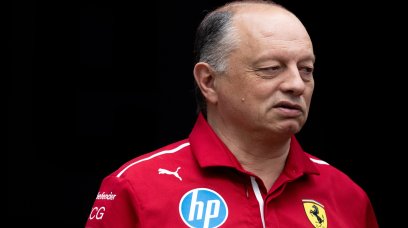
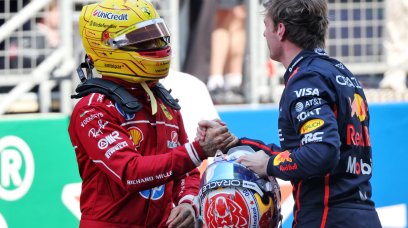
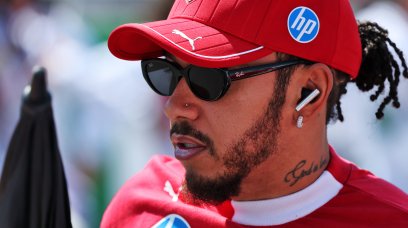
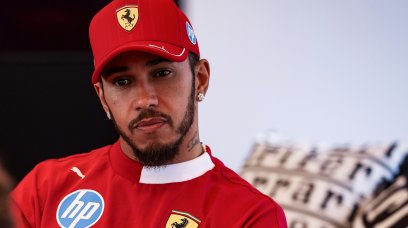
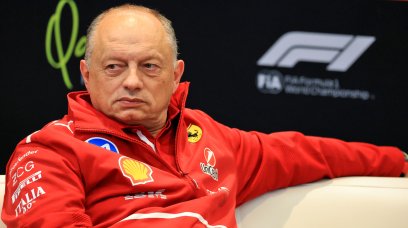
Scuderia Ferrari videos
